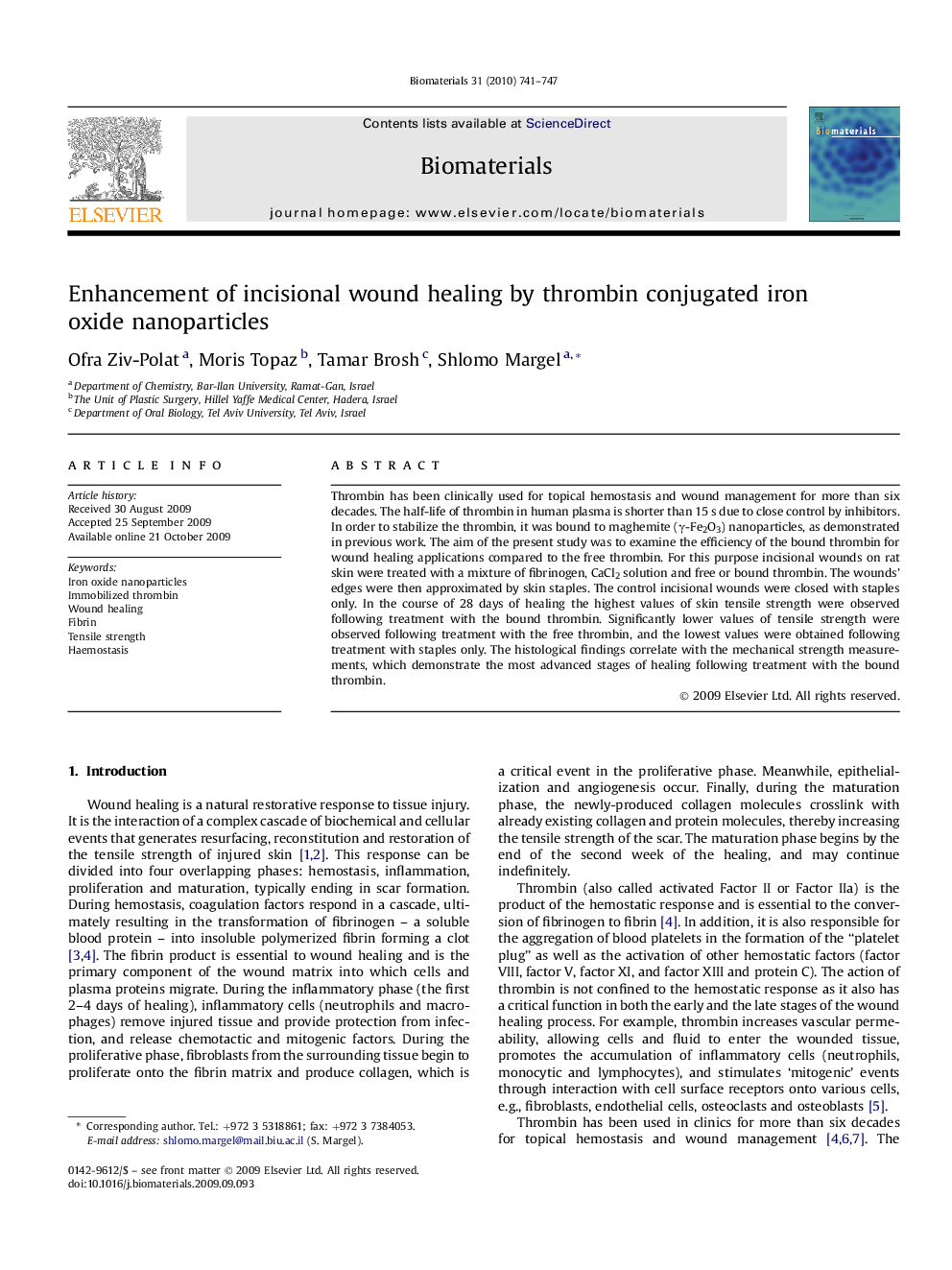| کد مقاله | کد نشریه | سال انتشار | مقاله انگلیسی | نسخه تمام متن |
|---|---|---|---|---|
| 9488 | 632 | 2010 | 7 صفحه PDF | دانلود رایگان |

Thrombin has been clinically used for topical hemostasis and wound management for more than six decades. The half-life of thrombin in human plasma is shorter than 15 s due to close control by inhibitors. In order to stabilize the thrombin, it was bound to maghemite (γ-Fe2O3) nanoparticles, as demonstrated in previous work. The aim of the present study was to examine the efficiency of the bound thrombin for wound healing applications compared to the free thrombin. For this purpose incisional wounds on rat skin were treated with a mixture of fibrinogen, CaCl2 solution and free or bound thrombin. The wounds' edges were then approximated by skin staples. The control incisional wounds were closed with staples only. In the course of 28 days of healing the highest values of skin tensile strength were observed following treatment with the bound thrombin. Significantly lower values of tensile strength were observed following treatment with the free thrombin, and the lowest values were obtained following treatment with staples only. The histological findings correlate with the mechanical strength measurements, which demonstrate the most advanced stages of healing following treatment with the bound thrombin.
Journal: Biomaterials - Volume 31, Issue 4, February 2010, Pages 741–747